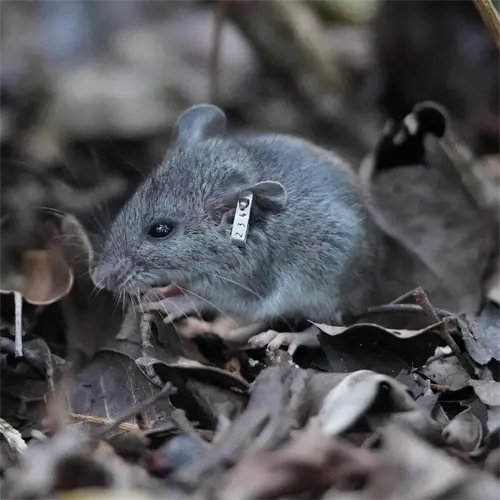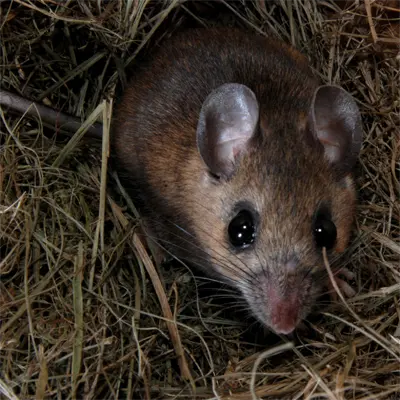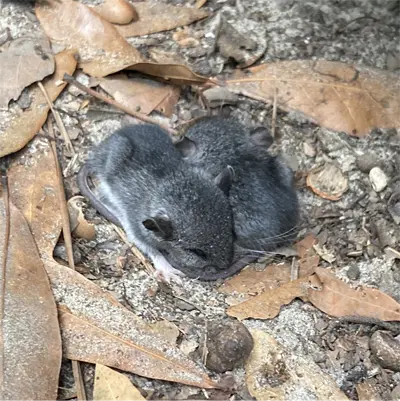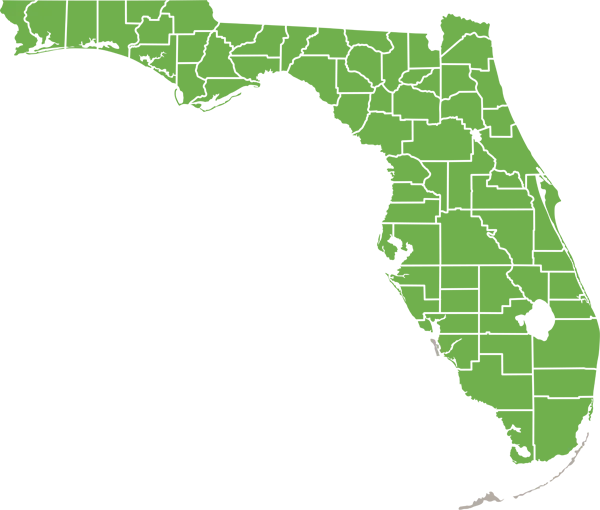Cotton Mouse
- Scientific Name
- Peromyscus gossypinus
- Also Known As
- Cotton Deer Mouse
- Range
- All of Florida Except the Keys
- Diet
- Plants and Insects
- Life Expectancy
- 1 Year
Quick Links
Cotton Mice in Central Florida
The cotton mouse (Peromyscus gossypinus) is a small rodent native to the southeastern United States, including central Florida.
Often confused with the white-footed mouse, cotton mice can be identified by their larger size, grayish-brown fur, and habitat preferences. This guide provides identification tips, biology facts, and prevention methods for cotton mice inhabiting urban and suburban areas of central Florida.
Appearance and Identification
Cotton mice can be distinguished from similar Peromyscus species by examining both juvenile and adult physical characteristics
Cotton mice are larger with more tawny fur compared to white-footed mice. Their feet and tail lack the stark white underside of white-footed mice. Runways through vegetation, nests, tracks, and gnaw marks help identify cotton mice infestations.
Maturation Rate
Young cotton mice grow rapidly, reaching reproductive maturity by 6 weeks old. They are independent after weaning around 21 days of age. The average lifespan is about 1 year in the wild. Their high reproductive rate allows cotton mice to quickly rebound after control efforts.
Habits and Behavior
Cotton mice are nocturnal and most active during dawn and dusk hours. They prefers fields, scrublands, and wetland edges with dense grassy vegetation or brushy shrubs. Inside structures, cotton mice tend to occupy lower areas like basements and crawlspaces.
Outdoors, they construct globular nests made of shredded plant matter on the ground or low in bushes. Cotton mice can access homes through small openings around foundations. They are more solitary and territorial than house mice.
Reproduction and Lifespan
Cotton mice can breed year-round in central Florida. Females produce 2-3 litters per year with 1-7 young per litter. The gestation period is 23 days. Females may nest together when raising litters.
Ideal Habitat and Range
The warm, humid climate of central Florida provides ideal habitat for cotton mice. Average temperatures range from 60s to 70s°F in winter and 70s to 90s°F in summer. Rainfall is plentiful, especially June through September.
These conditions allow development of ideal cotton mouse habitat like tall grasslands, shrublands, forest edges, and wetlands. Rural pastures, citrus groves, and suburban yards surrounded by natural areas provide food, vegetation, and access to homes. Cotton mice flourish and numbers climb rapidly during warm, wet periods.
Diet and Feeding
Cotton mice are omnivorous and eat a varied mixture of plant and animal matter. Their diet includes:
- Seeds and grains – wheat, oats, rye, berries
- Fungi – mushrooms, truffles
- Fruits – grapes, apples, citrus
- Nuts – acorns, hickory, pecans
- Green vegetation – grasses, leaves, stems
- Insects – beetles, caterpillars, wasps, ants
- Arachnids – spiders, ticks
- Snails and worms
Cotton mice forage primarily on the ground but will climb for fruits and seeds. They frequently cache excess food in shallow holes or burrows. Home infestations result from cotton mice accessing stored grains, pet food, and edible waste.
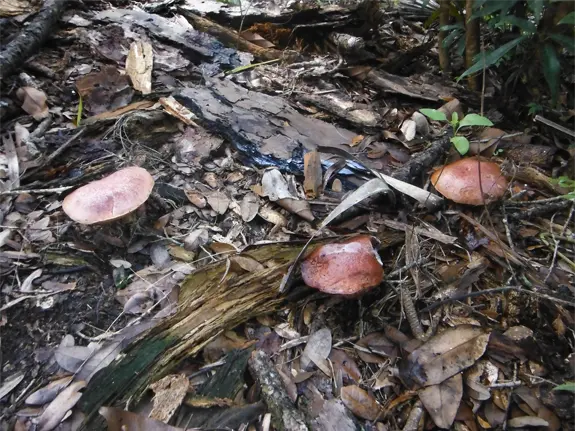

Common Health Risks
Cotton mice can transmit diseases through direct contact, fleas, ticks, feces, and urine:
- Hantavirus – Rare but often fatal respiratory disease spread via saliva, urine, and droppings.
- Lymphocytic choriomeningitis – Spread through droppings and causes fever, muscle aches, vomiting.
- Rat bite fever – Bacteria in saliva causes fever, headache, vomiting.
- Salmonellosis – Spread by infected mice feces and causes diarrhea.
- Leptospirosis – Bacteria in urine causes fever, chills, vomiting, diarrhea.
They also trigger allergies and asthma symptoms in sensitive people from their droppings, hair, and nesting materials accumulating in infested areas. Timely removal is vital to prevent associated health issues.
Preventing Cotton Mouse Infestations
Prevention involves denying cotton mice access to structures by sealing exterior holes and gaps. Trim vegetation at least 3 feet from foundation walls. Seal any openings wider than 1/4 inch with appropriate materials. Traps and rodenticides in yards and sheds can further reduce local populations.
Eliminate outdoor food sources like pet food, bird seed, compost piles, and fallen fruits/nuts. Indoors, store human and pet foods in sealed metal or plastic containers to deny access. With vigilant sanitation and exclusion measures, cotton mouse invasions can be prevented.
Cotton Mice in Central Florida – Conclusion
The warm, humid climate and native vegetation of central Florida provides prime conditions for cotton mice populations. They readily capitalize on openings and food sources around suburban homes.
Through early structural exclusion, population control, and sanitation measures, cotton mouse infestations can be prevented. Signs like droppings, gnaw marks, nests, and rub marks indicate where cotton mice have breached homes.
Swift intervention with appropriate trapping or rodenticide baits applied by a professional pest control service is recommended if cotton mice become established indoors. With proactive prevention and population reduction, cotton mice can be managed even in Florida’s hospitable environment.

